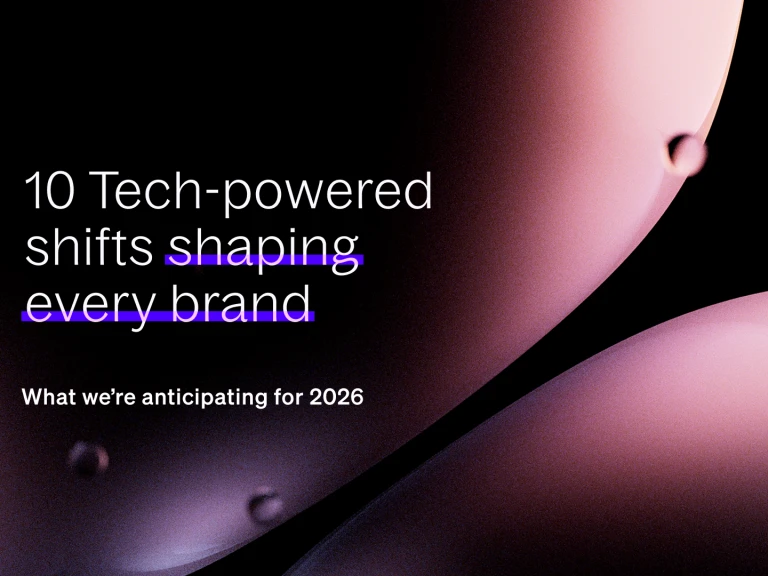Many teams fail at AI automation because they fall into what I call the Process Mapping Trap: trying to force probabilistic AI tools to follow deterministic human processes through increasingly complex prompts. This fails because they're applying the wrong mental model entirely.
Systems thinking reveals why: they're stuck in old paradigms about how work should be done, trying to preserve process structure instead of focusing on outcomes. Outdated mental models constrain them to linear, process-oriented thinking.
Design thinking offers the escape: we need to reframe the problem from "How do we make AI follow our process?" to "What system design achieves our outcomes?"
The solution: Build deterministic validation layers that check AI outputs against business requirements, separating generation from validation. Let the LLM do what it excels at (creative generation) while code-based validation ensures compliance.
When validation fails, specific feedback enables iteration until outputs meet specifications. This represents a paradigm shift from process mapping to outcome engineering.
Instead of crafting perfect prompts (diminishing returns), we build robust validation systems that scale and evolve independently. The convergence of systems thinking, design thinking, and architectural patterns gives us the tools to stop automating human work and start designing human-machine systems that deliver consistent, usable outputs.
Success comes not from making AI understand our processes, but from engineering systems that harness AI's probabilistic creativity within deterministic guardrails.
Seeing the Problem
There's a particular moment of recognition I’ve noticed when watching teams implement their first AI automation workflows. After the initial excitement of connecting APIs and watching language models respond to prompts, they inevitably encounter what I've come to call the Process Mapping Trap.
It's that moment when increasingly elaborate prompts fail to produce consistent results, when the promise of automation collides with the messy reality of probabilistic outputs, and when teams realize that perhaps they've been thinking about the problem all wrong. The trap is seductive because it feels so logical.
We have a process that works; humans execute it daily with reasonable success. We have powerful AI tools that can understand and generate language.
Surely, we think, it's simply a matter of translating one to the other with sufficient precision. This thinking leads us down a path of ever-more-detailed instructions, creating prompts that read like technical documentation, complete with subsections, conditions, and increasingly desperate attempts at specificity.
But here's the thing: we're applying the wrong mental model entirely.
A Fundamental Mismatch
To understand why our intuitive approach fails, we need to examine the nature of the tools we're working with. Large Language Models operate on statistical patterns learned from vast corpora of text.
They're prediction engines, calculating the probability of the next token based on everything that came before. This probabilistic nature represents the fundamental architecture that gives these systems their remarkable capabilities.
Meanwhile, business processes demand deterministic outcomes. A social media caption either includes the required hashtags or it doesn't.
Content either stays within character limits or it exceeds them. A customer service response either follows compliance guidelines or it violates them.
We're dealing with binary states that determine whether work product is acceptable, not probabilistic assessments. When we try to force probabilistic tools to behave deterministically through increasingly detailed prompting, we're essentially trying to teach a jazz musician to play by writing longer and more complex sheet music.
No matter how detailed our notation becomes, improvisation remains at the heart of their performance. We need a different approach to the performance entirely, not more detailed instructions.
A Systems Thinking Perspective
The Process Mapping Trap becomes clearer when viewed through the lens of systems thinking. Dana Meadows, in her exploration of leverage points in systems, identified that the highest leverage point for change lies in the paradigm or mindset out of which the system arises.
Our paradigm for AI automation is fundamentally flawed when we think in terms of linear processes rather than complex systems. Peter Senge's work on mental models is useful to understand why we fall into this trap so consistently.
Our mental model of work is shaped by centuries of human-driven process design. We see tasks as sequential steps, each building on the last, with human judgment bridging the gaps.
This mental model becomes invisible to us, yet it constrains our available solution space. That is, we can't solve the automation problem effectively because we're not even seeing the real problem; we're seeing our mental model of it.
Systems thinking teaches us to look for feedback loops, emergent properties, and system boundaries. When we combine the probabilistic outputs of an LLM with a deterministic validation layer, we create something with emergent properties that neither component possesses alone.
The LLM brings creative generation, the validation layer brings deterministic checking, but together they create a self-improving system capable of reliable output. This is a fundamentally different thing than either component in isolation.
Consider the concept of system boundaries. In traditional human processes, the boundary of responsibility is clear: the human is responsible for the entire process and its output.
In our prompt-heavy approach to AI, we try to maintain this same boundary, making the LLM responsible for everything. But effective systems thinking suggests redrawing these boundaries.
The LLM becomes responsible for generation, the validation layer for compliance, and the overall system for successful output.
Learning from Complex Systems Theory
The field of complex systems offers additional insights. In his work on system design, the computer scientist Leslie Lamport makes a crucial distinction between safety properties (things that must never happen) and liveness properties (things that must eventually happen). Traditional human processes are full of implicit safety checks: the experienced social media manager who instinctively knows when a caption might be tone-deaf, the content creator who can feel when messaging drifts off-brand.
When we map these processes directly to AI workflows, we lose these implicit safety checks. The LLM doesn't "know" in the same intuitive way. It operates in a high-dimensional space of linguistic possibilities, and our prompts are merely gentle pressures pushing it toward certain regions of that space.
No amount of pressure guarantees it won't occasionally wander into unacceptable territory. This is where the architectural insight becomes crucial: instead of trying to constrain the wandering, we need to build fences.
A Design Thinking Reframe
If systems thinking helps us understand the problem, design thinking offers us tools to solve it. The double diamond model of design thinking describes two phases: divergent thinking (exploring the problem space) followed by convergent thinking (narrowing to a solution).
When we're stuck in the Process Mapping Trap, we're operating in the wrong diamond entirely. We've prematurely converged on a solution ("make the AI follow our process") without properly exploring the problem space ("how do we achieve our business outcomes using AI capabilities?").
Design thinking's emphasis on reframing problems is particularly relevant here. Instead of asking "How do we get the AI to follow our social media process?" we might reframe to "How might we generate social media content that consistently meets our brand standards?"
This subtle shift opens up entirely new solution spaces. Suddenly, we're not confined to replicating human processes; we're free to imagine new architectures.
The principle of "fail fast" from design thinking aligns perfectly with the validation-layer approach. Rather than trying to prevent all failures through perfect prompting (impossible), we create a system that fails quickly and informatively when outputs don't meet standards.
Each failure generates specific feedback that improves the next iteration. This rapid iteration cycle, core to design thinking, becomes the engine of our system's reliability.
Design thinking also emphasizes starting with user needs rather than existing solutions. In our context, the "user" is the business requiring compliant content.
Their need isn't "an AI that follows our process" but "consistent, compliant content at scale." When we start from this genuine need rather than from our existing process, we open ourselves to architectural innovations.
Validation as an Architectural Pattern
Consider how modern software systems handle content validation challenges. When processing user input, we don't trust users to format their data correctly, no matter how detailed our instructions.
Instead, we implement validation layers that serve as deterministic checkpoints ensuring data conforms to requirements before it proceeds through the system. This pattern, fundamental to robust software design, offers us a blueprint for AI automation.
In practical terms, this means creating a "business logic firewall": a deterministic validation layer that sits between the probabilistic generation and the final output. When an LLM generates a social media caption, for instance, the validation layer checks:
Are required hashtags present?
Is the character count within platform limits?
Does it avoid blacklisted terms?
Are mandatory disclosures included?
The beauty of this approach lies in its separation of concerns. The LLM can focus on what it does best (generating creative, contextually appropriate content) while the validation layer ensures compliance with rigid business requirements.
When validation fails, the system can provide specific feedback to the LLM for regeneration, creating an iterative refinement loop that eventually produces compliant output.
The MCP Architecture in Practice
While the validation layer concept is powerful in theory, Model Context Protocol (MCP) servers provide the practical architecture to make it reality. MCP servers act as the specification enforcement layer between your LLM and your business requirements, creating a standardized way for AI systems to interact with tools that impose deterministic validation logic.
Think of MCP servers as the interpreters that speak both languages fluently. On one side, they communicate with LLMs in natural language, providing clear feedback about what needs to be fixed.
On the other side, they execute programmatic rules with perfect precision. For example, when an LLM generates a social media caption, the MCP server doesn't just reject it for being too long; it responds with something like:
"The caption exceeds the 280 character limit by 47 characters. Please shorten while maintaining the key message about our product launch."
This bidirectional communication is what makes the architecture powerful. The MCP server becomes more than just a gatekeeper; it becomes a coach that guides the LLM toward compliant output through specific, actionable feedback.
Each iteration isn't just a blind retry but an informed refinement based on precise information about what failed validation and why. The MCP layer also provides something crucial for enterprise adoption: auditability.
Every validation check, every piece of feedback, every iteration gets logged. When a piece of content finally passes validation, we have a complete record of how it got there.
This transparency builds trust in automated systems and provides valuable data for continuous improvement. Most importantly, MCP servers make this entire pattern maintainable at scale.
When social media platforms change their requirements, when regulatory compliance updates, when brand guidelines evolve, we update the MCP server's validation rules once. We don't hunt through dozens of prompts or retrain models.
The separation between generation and validation means each layer can evolve independently while maintaining system reliability.
Rethinking Process Design
The Process Mapping Trap reveals a deeper issue with how we conceptualize automation. Human processes evolved around human capabilities:
Our ability to hold context
Make intuitive leaps
Apply judgment
These processes are full of what Michael Polanyi called "tacit knowledge," things we know but cannot fully articulate. When we try to map these processes directly to machines, we're attempting to make explicit what was always implicit, to articulate what was always felt.
Systems thinking shows us that this is a category error. We're trying to preserve the structure of a system (the process) when we should be preserving its function (the outcome).
Meadows reminds us that system structure determines behavior. If we want different behavior (reliable automation), we need different structure, not better instructions for the old structure.
Design thinking adds another dimension: the importance of prototyping and iteration. Instead of trying to design the perfect process upfront, we should be rapidly prototyping different architectural approaches, learning from each failure.
The validation-layer architecture succeeds partly because it embodies this principle. Every failed validation is a learning opportunity, a prototype that didn't quite work but teaches us something about what will.
Synthesis: The New Mental Model
When we synthesize insights from systems thinking and design thinking, a new mental model emerges. We stop seeing AI automation as "replacing human work" and start seeing it as "designing sociotechnical systems."
The human doesn't disappear from this model; they move from process executor to system designer and exception handler. This shift aligns with what systems thinkers call "second-order change": change that modifies the system itself rather than just its parameters.
We're not just changing how we write prompts (first-order change); we're changing our entire conception of what AI automation means (second-order change). The question shifts from "How do humans create social media content?" to "What system design produces social media content that meets our specifications?"
This reframing moves us from process mapping to outcome engineering. Consider the difference in approach.
A process-mapped workflow might include steps like:
Review brand guidelines
Identify key message
Draft engaging opening
Add call-to-action
Include relevant hashtags
Each step assumes intelligent interpretation and adaptation. An outcome-engineered system, by contrast, starts with specifications:
Character limit ≤ 280
Hashtag count between 3-5
Hashtags from approved list = true
FK reading grade < 8
Brand terms present = true
The system then uses whatever combination of generation and validation necessary to achieve these specifications, without us prescribing the exact path.
The Manufacturing Metaphor
This distinction becomes clearer through a manufacturing analogy. Traditional craftsmanship relies on the skill and judgment of individual artisans.
Each piece is unique, shaped by the craftsperson's interpretation of requirements and their response to the material's characteristics. Quality is ensured through the artisan's expertise and attention.
Modern manufacturing, however, separates creation from quality assurance. Assembly processes focus on efficient production, while quality control gates ensure specifications are met.
A part either passes dimensional inspection or it doesn't. There's no negotiation, no "close enough," just clear, measurable criteria.
When we build AI automations, we're designing manufacturing systems rather than replicating craftsmanship. The LLM becomes our production line, capable of generating vast quantities of content.
The validation layer becomes our quality control, ensuring only specification-compliant output proceeds. This separation allows each component to excel at what it does best.
But unlike traditional manufacturing, our system exhibits what systems thinkers call "adaptive capacity." Each iteration through the validation loop potentially improves the output.
The system learns, not in the machine learning sense, but in the cybernetic sense of continuous adjustment toward a goal state.
Practical Implications
This architectural pattern has profound implications for how we design and implement AI automations. First, it suggests that prompt engineering, while important, has diminishing returns.
Instead of spending days crafting the perfect prompt, we're better served by building robust validation and feedback systems. A simple prompt with good validation beats a complex prompt with hope-based quality control.
Second, it changes how we handle edge cases. In a prompt-centric approach, edge cases require prompt modifications that risk affecting all outputs. In a validation-centric approach, edge cases are handled by adding new validation rules that only trigger when relevant.
The system becomes more robust over time without increasing prompt complexity. Third, it enables what I call "graceful degradation."
When the system can't produce compliant output after multiple iterations, it can escalate to human review with specific information about what requirements couldn't be met. This proves far more useful than discovering non-compliance after publication.
From a systems perspective, we're implementing what Meadows called "self-organization": the ability of a system to learn, diversify, and complexify its structure. Our validation rules can evolve independently of our generation prompts, allowing the system to adapt to new requirements without wholesale redesign.
Waxing Epistemological
There's a deeper, philosophical dimension to this discussion. The Process Mapping Trap reflects a category error in how we think about knowledge and intelligence.
We tend to anthropomorphize AI systems, imagining they "understand" our instructions the way a human would. But LLMs operate in a fundamentally different epistemological space.
They don't have concepts or understanding in the human sense; they have statistical patterns and probability distributions. We should view this as a different kind of capability to be harnessed rather than a limitation to be overcome.
The artist Paul Klee once said that art doesn't reproduce the visible but makes visible. Similarly, LLMs don't reproduce human thinking but make possible new forms of content generation.
Our job becomes building systems that channel their unique capabilities toward useful outcomes rather than making them think like humans. This philosophical shift connects back to both systems thinking and design thinking.
Systems thinking teaches us that different types of systems require different types of control mechanisms. Design thinking reminds us that breakthrough innovations often come from challenging fundamental assumptions about how things "should" work.
A Convergence of Perspectives
As we move forward with AI automation, we need to shed our intuitive but misguided approaches. The future belongs to those who can synthesize multiple perspectives:
The systemic view that sees interconnections and feedback loops
The design view that prioritizes user needs and rapid iteration
The architectural view that separates concerns appropriately
These perspectives converge on a single insight: successful AI automation requires us to think differently about work itself. We need what systems thinkers call a "paradigm shift" and what design thinkers call a "reframe."
Both point to the same necessity: abandoning our attachment to existing processes and embracing new architectural possibilities. This might seem like additional complexity, and in some ways, it is.
But we're placing complexity in the right location: in the system design rather than in the prompts. This kind of complexity scales, maintains itself, and evolves with changing requirements.
Most importantly, it delivers reliable results. The Process Mapping Trap ultimately teaches us about humility.
It asks us to recognize that the ways we've always worked aren't necessarily the ways machines should work. It requires letting go of the comfortable fiction that AI automation is just "human work but faster" and embracing the reality that it represents something fundamentally different.
When we make this shift, we stop fighting against the nature of our tools and start building systems that harness their true potential. The teams that grasp this distinction will build automations that actually work: not occasionally, not usually, but consistently and reliably.
They'll stop asking "How can we make the AI understand our process?" and start asking "What system design achieves our outcomes?" That shift in questioning, more than any technical innovation, will separate successful AI automation from expensive experimentation.
In the end, the Process Mapping Trap teaches us that the future of work requires reimagining work itself through the lens of human-machine collaboration, where each party contributes what they do best within an architecture designed for reliability. The convergence of systems thinking, design thinking, and architectural patterns gives us the conceptual tools to build this future.
That represents more than just a technical insight; it's a fundamental reorientation of how we think about automation in the age of AI. The path forward is clear: embrace the probabilistic nature of AI, build deterministic validation systems, and design architectures that leverage the strengths of both.
Stop mapping processes and start engineering outcomes. The organizations that make this conceptual leap will find themselves not just automating work, but reimagining what work can be.










